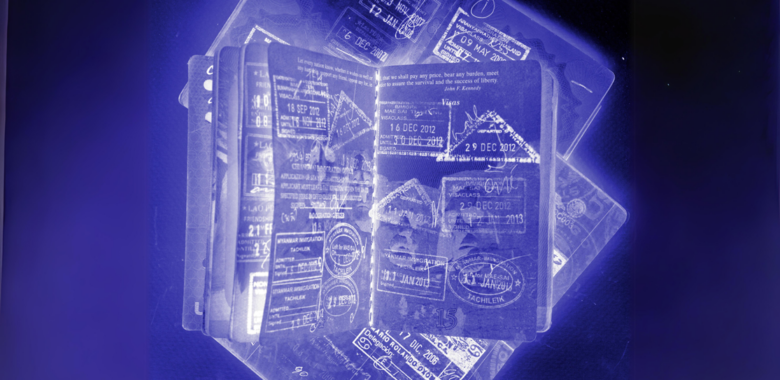Did you know that your passport is packed with close to 100 security measures? Some of these are easy to see, such as the serial number and tactile markings on the cover material, while others are hidden, such as the chip, the hologram details, the watermark, and different kinds of ink.
These features are essential to protect our identity and our borders. They help us to confirm that people are who they say they are, and to prevent identity theft, terrorism, and illegal immigration.
But how do border guards spot a fake passport in a matter of seconds? They rely on their experience and training to detect any signs of fraud, in addition to using special equipment and techniques to check the various security features.
Here are some of the features being checked when you’re passing through security…
The polycarbonate data page: This is one of the most important pages within the passport. This material is incredibly difficult to modify or change – and it is now frequently used instead of paper to store personal details. The polycarbonate page in our passports is composed of multiple sheets of plastic that are fused together. Our age, names and photographs are all laser engraved onto the page, with the lasers all targeting different layers of the polycarbonate. Any attempts to peel this page apart would damage some of the security features in place – and then it becomes immediately clear that it’s been tampered with.
The hologram: You may see the hologram on your passport when it catches in the light. On a modern passport, these are on a photo-sized patch attached to one of the inner layers of the data page. While holograms can be embossed onto identity documents at scale, you first need to create a ‘master’ which is an incredibly complicated and expensive process. This means holograms are very hard to fake.
The biometric chip: All electronic passports are embedded with a microchip which sits between the various layers of polycarbonate. This chip holds all our personal information and features a secure operating system (OS). This small piece of technology enables us to use eGates and works alongside facial recognition to confirm our identity – helping us to move around faster and more securely. It is worth noting, however, that these chips will need to be further secured to protect them from more advanced threats due to quantum.
The serial number: Your passport serial number is not only printed on the top right hand corner of your passport, but it is burned through every page with laser technology. This helps to prevent forgers from altering one or more digit in an attempt to evade border control. The laser also creates small conical holes that vary in size depending on the page number, making it even more difficult for forgers to replace pages.
The print design: One way to prevent passport forgery is to use an endpaper print design with various anti-copy features. This includes different passport issuers printing in unique pantone spot colours, in addition to two-colour UV 365 printing and inks that react to IR light. When passports are checked at border control, guards will use UV light to see complex patterns that are hard to replicate by fraudsters.
The cover material: The passport cover is a vital component of the document’s security, made of a durable, latex-saturated material. The cover and the end pages are bonded with various adhesives to make sure they are inseparable; this prevents unauthorised access to the end pages, which could ultimately compromise the data page.
The watermark: Watermarks are incorporated into the passport using a mold specific to the customer’s design during the papermaking process. Watermarks can be easily checked by looking at the document against the light or by shining a light through the paper. A real watermark will not show any reaction under UV light, while a fake one that is chemically produced will likely glow or change colour, indicating a counterfeit attempt.
The security fibres: High-security papers can contain visible and invisible security fibres. These special fibres are inserted during the paper manufacturing process and appear randomly across the paper. Colours, patterns, shapes and sizes can vary depending on the issuing country and the security level of the document. Security fibres require sophisticated equipment and techniques which makes them difficult to replicate.
These are just some of the high-security features making it extremely hard and time-consuming for people to replicate or tamper with a genuine document. And there are many more clever techniques that make passports one of the most secure documents in the world.
These measures have proven to be highly effective in preventing even the most advanced and persistent criminals from copying or modifying a legitimate document. However, we cannot get complacent. Continued research and development is crucial to enhance passport security and stay ahead of the fraudsters.
Find out more about high-security printing for passports here: https://www.thalesgroup.com/en/markets/digital-identity-and-security/government/documents/passport/security-printing



